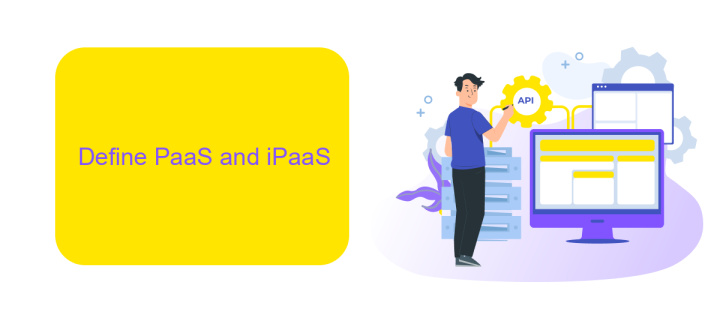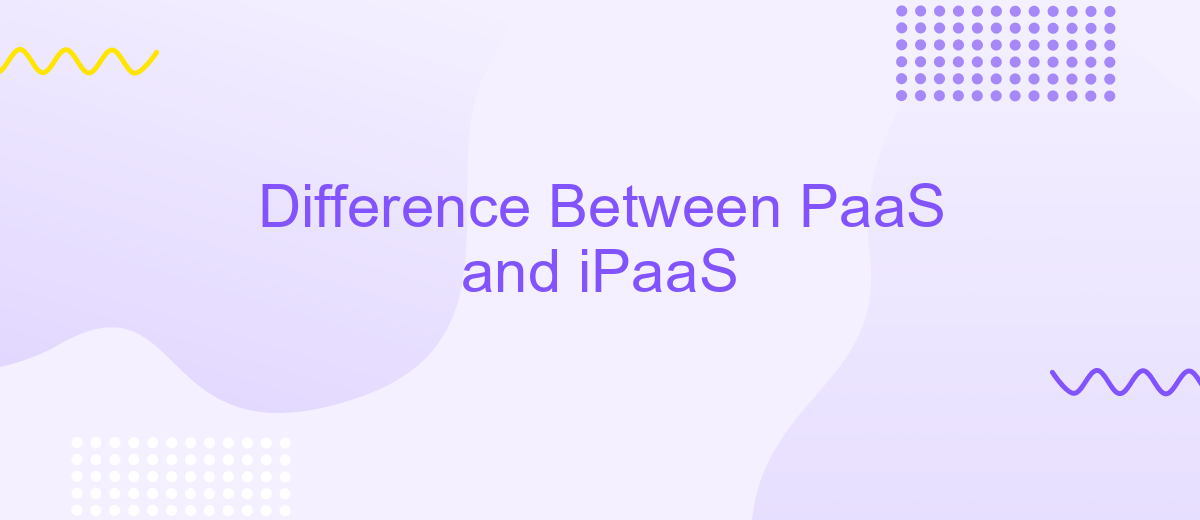Difference Between PaaS and iPaaS
Understanding the difference between Platform as a Service (PaaS) and Integration Platform as a Service (iPaaS) is crucial for businesses navigating the cloud computing landscape. While both offer cloud-based solutions, they serve distinct purposes. PaaS provides a framework for developers to build, deploy, and manage applications, whereas iPaaS focuses on integrating various applications and services seamlessly.
Introduction
In the realm of cloud computing, understanding the differences between Platform as a Service (PaaS) and Integration Platform as a Service (iPaaS) is crucial for businesses aiming to optimize their IT infrastructure. While both services offer cloud-based solutions, they cater to distinct needs and use cases.
- PaaS: Provides a platform allowing customers to develop, run, and manage applications without dealing with the underlying infrastructure.
- iPaaS: Focuses on integrating various applications and services, enabling seamless communication between disparate systems.
As businesses grow, the need for efficient integration becomes paramount. Services like ApiX-Drive simplify this process by offering robust tools to connect different applications effortlessly. By leveraging such solutions, companies can ensure smooth data flow and enhanced operational efficiency, making informed decisions on whether PaaS or iPaaS aligns better with their strategic goals.
Define PaaS and iPaaS

Platform as a Service (PaaS) is a cloud computing model that provides developers with a platform to build, deploy, and manage applications without worrying about the underlying infrastructure. PaaS offers a complete development and deployment environment in the cloud, with resources that enable developers to deliver everything from simple cloud-based apps to sophisticated, cloud-enabled enterprise applications. This model includes infrastructure (servers, storage, and networking), middleware (development tools, database management systems, business analytics), and other services to support the application lifecycle. Examples of PaaS providers include Google App Engine, Microsoft Azure, and Heroku.
Integration Platform as a Service (iPaaS) is a cloud-based service that provides tools to integrate disparate applications, systems, and services across different environments. iPaaS solutions enable organizations to connect various cloud and on-premises applications, ensuring seamless data flow and process automation. These platforms typically offer pre-built connectors, data transformation capabilities, and workflow automation tools. For instance, ApiX-Drive is an iPaaS solution that simplifies the integration process by offering a user-friendly interface and a wide range of connectors to various applications and services. This allows businesses to automate workflows and enhance productivity without extensive coding or technical expertise.
Compare PaaS and iPaaS

Platform as a Service (PaaS) and Integration Platform as a Service (iPaaS) are both cloud-based solutions, but they serve different purposes. PaaS provides a platform allowing customers to develop, run, and manage applications without dealing with the infrastructure. In contrast, iPaaS focuses on integrating different software applications and services, enabling seamless data flow between them.
- PaaS offers a complete development and deployment environment in the cloud, including tools for coding, testing, and deploying applications.
- iPaaS provides tools and services to integrate various applications, data sources, and APIs, facilitating data synchronization and process automation.
- PaaS is ideal for developers looking to build and scale web applications quickly, while iPaaS is suited for businesses needing to connect disparate systems and automate workflows.
For example, ApiX-Drive is an iPaaS solution that simplifies the integration process by allowing users to connect various apps and services without any coding knowledge. This makes it easier for businesses to automate their workflows and ensure data consistency across platforms. While PaaS and iPaaS serve different needs, they can complement each other in a comprehensive cloud strategy.
Advantages and Disadvantages

Platform as a Service (PaaS) and Integration Platform as a Service (iPaaS) each offer unique advantages and disadvantages for businesses looking to streamline their operations. PaaS provides a comprehensive environment for developers to build, test, and deploy applications without worrying about the underlying infrastructure. iPaaS, on the other hand, focuses on integrating various applications and data sources, enabling seamless communication and data flow between them.
One of the main advantages of PaaS is its ability to accelerate development processes, allowing teams to focus on writing code rather than managing servers and networks. iPaaS, such as ApiX-Drive, simplifies the integration of disparate systems, reducing the complexity and time required to connect various applications.
- PaaS Advantages: Rapid development, scalability, and reduced infrastructure management.
- PaaS Disadvantages: Limited control over the underlying infrastructure and potential vendor lock-in.
- iPaaS Advantages: Streamlined integrations, improved data flow, and enhanced operational efficiency.
- iPaaS Disadvantages: Potential security concerns and the need for ongoing monitoring and maintenance.
Ultimately, the choice between PaaS and iPaaS depends on the specific needs and goals of your business. While PaaS is ideal for development-focused tasks, iPaaS solutions like ApiX-Drive are invaluable for businesses that require robust integration capabilities to connect and automate their workflows.
Conclusion
In conclusion, both PaaS and iPaaS offer distinct advantages for businesses seeking to streamline their operations and enhance their technological capabilities. PaaS provides a robust platform for developers to build, deploy, and manage applications without worrying about the underlying infrastructure, making it ideal for companies focused on application development and deployment. On the other hand, iPaaS excels in integrating disparate systems and automating workflows, which is crucial for organizations that need seamless data flow between various applications and services.
Choosing between PaaS and iPaaS ultimately depends on the specific needs and goals of your organization. For businesses looking to integrate multiple applications and automate their processes, solutions like ApiX-Drive can be particularly beneficial. ApiX-Drive simplifies the integration process, allowing companies to connect various services without extensive coding knowledge. By leveraging the strengths of either PaaS or iPaaS, or a combination of both, businesses can achieve greater efficiency, scalability, and innovation in their operations.
- Automate the work of an online store or landing
- Empower through integration
- Don't spend money on programmers and integrators
- Save time by automating routine tasks
FAQ
What is the primary difference between PaaS and iPaaS?
Can PaaS and iPaaS be used together?
What are the typical use cases for iPaaS?
How does iPaaS handle data security?
Can iPaaS be used for integrating on-premises applications with cloud services?
Time is the most valuable resource for business today. Almost half of it is wasted on routine tasks. Your employees are constantly forced to perform monotonous tasks that are difficult to classify as important and specialized. You can leave everything as it is by hiring additional employees, or you can automate most of the business processes using the ApiX-Drive online connector to get rid of unnecessary time and money expenses once and for all. The choice is yours!


